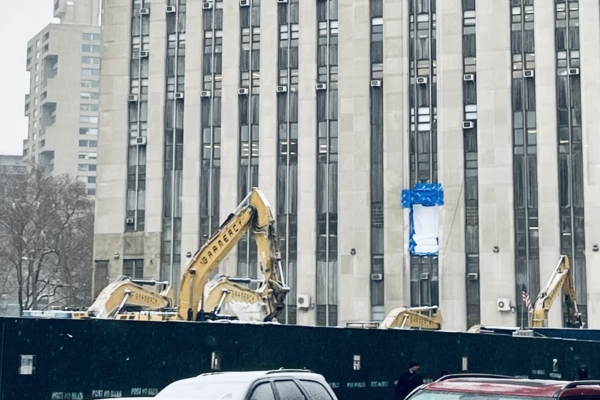On May 15th, the formal implementation of the Manhattan Detention Center (MDC) redevelopment contract at 125 White Street in Manhattan’s Chinatown marked a new phase in the controversial Chinatown community prison reconstruction project. This project, with a budget of over $3.7 billion and a construction period of 7 years and 3 months, has consistently raised high levels of concern and anxiety among Chinatown residents.
The project is being undertaken by the California-based construction giant Tutor Perini and O&G Industries joint venture company, which signed the contract with the city government on February 19th of this year. The new prison is planned to have 1,040 beds, 125 underground parking spaces, and include 20,000 square feet of community and commercial space, providing entertainment, dining, office, and recreational facilities. This marks Tutor Perini’s second major prison construction contract in New York City, following the Brooklyn community prison project.
The project is expected to be completed in August 2032, far exceeding the initial target of completion in 2027, with the budget doubling from the initial $1.7 billion to over $3.7 billion. As one of the four new prisons being built to replace the Rikers Island prison complex, the Chinatown prison will be the latest facility to be completed. The Brooklyn prison is scheduled for completion in 2029, while Queens and the Bronx are slated for completion in 2031.
Insiders revealed that May 15th was just the first day of the contract taking effect, and construction has not yet commenced on-site. The main task for the construction team at the moment is to assemble the team and they will soon release detailed information to the community, seeking community participation and feedback. The city government had announced the proposed prison designs in January, emphasizing that they were not final designs and that the community would have ample opportunity to interact with the designers.
However, this progress has left the community deeply unsettled. Assemblyman Yu Jinshan, representing the Democratic Party’s 65th District in Chinatown, stated that this move has made the years of Chinatown’s resistance against a large prison project “go down the drain.” He pointed out that the then-Mayor Ba Sihao and the progressive faction in the city council, under the guise of “criminal justice reform,” pushed for prison reconstruction, ultimately shifting the heavy costs onto Chinatown residents.
Yu Jinshan expressed concern that the comfortable environment planned for the community prison in the future, “allows criminals to enjoy the most humane treatment, which is a bias towards justice reform, ignoring the rights of victims and disregarding the disasters of innocent communities.”
He believes that the current Mayor’s strong push to preserve Rikers Island prison, with the potential to convert the Chinatown prison site into affordable housing, is the best solution. For example, after federal takeover and the successful reconstruction of Rikers Island facilities, halting the construction of the Chinatown prison might offer a glimmer of hope for the community.
“Perhaps Mayor Adams’ close relationship with the federal government can fulfill our only hope,” he said.

